Satya's blog - Great Smoky Mountains railroad
After parking (costs $3) in the GSMR parking lot on Depot St (off 107),
the first thing I saw was the train parked on a siding near the station.
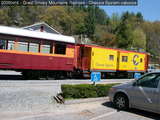
I guess they borrowed, bought, or leased the caboose from Chessie systems. It's fairly common to see engines from different railroads. I once saw a BNSF engine in South Carolina. BNSF is more a west-coast railroad. Since we had already bought tickets, we just picked up paper tickets based on the confirmation number and strolled around looking at the train. It consisted of a diesel engine, number 1755, followed by a generator car and a string of closed and open coaches. The Chessie caboose was on the following end. On the return trip, the engine was removed and placed at the other end. (We heard people speculating on the outbound trip that the engine would push the train back. In that case we would have been limited to 5 or 10mph.) That made the order: engine, caboose, cars, generator. 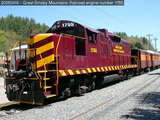
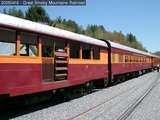
The next two pictures show the front of the engine. The first picture (all pictures are linked to the full-size version, click (or whatever) on it) shows the coupler, uncoupling ("cut"?) levers, ditch lights, brake hose, and MU hoses. The coupler is better seen in other pictures. The brake hose connects all the cars together to the compressed air system. This sets up air pressure in the brake cylinders and disengages the brakes. This means, if cars get uncoupled, the brakes lose air pressure from the broken hose and engage, causing the uncoupled cars to stop. The MU (multiple-unit) hoses are used to connect multiple engines together. The electrical and air pressure signals in these hoses allow a single operator to control the engines as one unit. Actually, I'm not sure which of these hoses are the brake hose. I thought it was the single big one. I used to know. 
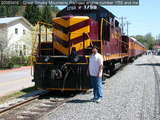
The next picture shows a coupling between cars. Not much to see, really. The set of 3 hoses, one on each side just like on the engine, is joined together. 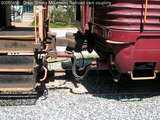
I tried to get a picture of one of the trucks. It's not very clear. Some cars had 3-axle trucks and some had 2-axle trucks. 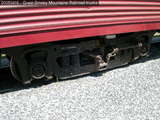
Last updated: Jan 22 2006 13:05 |
|